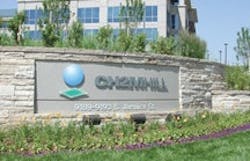CH2M Hill to Help Lead Five-Year Research Program on Nutrient Removal from Wastewater
CH2M HILL, a global full-service engineering, construction and operations firm, announced today that it will be part of a multidisciplinary team of experts to tackle the challenge of nutrient removal in wastewater treatment.
CH2M HILL will be part a program management team for the Water Environment Research Foundation (WERF) initiative that will include more than 30 wastewater utilities, universities and water organizations. Over the next five years, all of WERF’s nutrient -related research will be conducted under this program.
Nutrient removal is one of the most pressing water quality challenges. Many utilities are currently engaged in expensive facility upgrades to address environmental issues related to highly visible nitrogen control programs such as those targeting Long Island Sound, Chesapeake Bay and the Gulf of Mexico, while phosphorus control is driving the Great Lakes Initiative and the National Estuary Program.
Through this program, WERF’s goal is to reduce capital and operating and maintenance costs related to nutrient removal at wastewater treatment facilities by 10 percent. They plan to do this by developing and demonstrating new treatment technologies. The research will provide information on nutrients, specifically nitrogen and phosphorus, in wastewater to help regulators make informed decisions. Additionally, research will provide data on nutrient removal so that treatment facilities can select sustainable, cost-effective methods and technologies to meet permit limits.
“I feel motivated and privileged to participate in an effort that relies on a long-term program of collaborative research, that is committed to the development of regulatory guidelines representative of local conditions, and that understands the importance of outreach activities such as information exchange and technology transfer,” said Dr. Julian Sandino, CH2M HILL vice president and representative on the WERF leadership team. “Through this study, CH2M HILL will be able to share the lessons we have learned through our outstanding track record of nutrient removal innovation and implementation success.”
Research needs were refined during a WERF stakeholder workshop held in early March. Nearly 100 participants identified the top priority areas as: carbon augmentation alternative sources, refractory dissolved organic carbon, and phosphorus speciation and particle characterization. Other needs were also identified during the workshop, including developing guidelines for good modeling practices, creating a Wikipedia for operations, and providing cost/benefit analysis methodologies for nitrogen and phosphorus removal options.
Source: CH2M Hill
